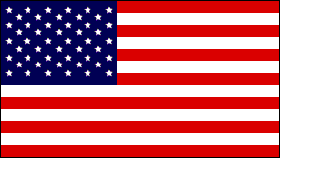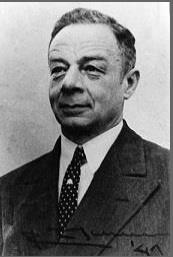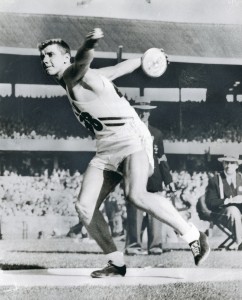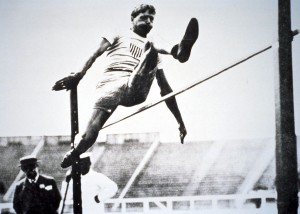Recently I posted about the United States’ dominance of the all-time Olympic medal lists (hey, I’m a Merkan – give me a break). But there are some things that can be analyzed a bit more closely.
Firstly, the United States is the world’s 3rd most populous country, after China and India. It would stand to reason that a country with more people would have a larger pool from which to draw great athletes. The US is also the world’s 3rd (or possibly 4th) largest country, after Russia and Canada, although not certain if that has any effect. (China and the United States are almost the exact same size and sometimes China is listed the 3rd largest nation.)
Secondly, the United States is a wealthy country, with the world’s largest gross domestic product (GDP). Again, a country with great wealth has several advantages in terms of producing great athletes and Olympic medalists. Not only is there more money to support the athletes, theoretically, but people from wealthy nations typically have more leisure time allowing them to train more for sports.
So let’s look at the Olympic medal lists in a couple different ways. Remember that North America and Europe/International analyze medal lists differently – in North America the nations are ranked by 1) medals, 2) gold, 3) silver, and 4) bronze; while in Europe they are ranked by 1) gold, 2) silver, and 3) bronze. So we’ll compare lists both by total medals won and gold medals won (we can’t use silver and bronze well in the analysis that will follow).
Second, a caveat is in order. We are going to eliminate any nations that no longer exists – you’ll see why soon.
We will then look at medals won in terms of 1) medals won per capita, or divided by the nation’s population, to eliminate the advantage gained by larger nations; 2) medals won per GDP, to eliminate the advantage gained by wealthier nations; and 3) medals won per GDP per capita, which is probably a better way to measure a nation’s wealth.
Here is the basic top 25 medal list, uncorrected, with ranks on the left both in US system and the European system:
[table]
RankUS,RankEur,NOC,G,S,B,Meds
1,1,United States,1083,863,760,2706
2,2,Soviet Union,473,376,355,1204
3,3,Germany,292,326,312,930
4,4,Great Britain,254,288,287,829
5,6,France,250,265,314,829
6,5,Italy,243,206,231,680
7,8,Sweden,194,210,236,640
8,10,Russia,183,166,179,528
9,7,China,213,166,147,526
10,9,German Demo. Rep.,192,165,162,519
11,13,Australia,144,159,185,488
12,12,Hungary,169,151,170,490
13,11,Norway,174,162,142,478
14,14,Finland,145,147,175,467
15,15,Japan,140,143,160,443
16,16,Canada,122,156,167,445
17,17,The Netherlands,115,125,140,380
18,19,Switzerland,101,116,114,331
19,21,Austria,82,115,119,316
20,20,Romania,88,94,120,302
21,18,Korea (South),107,99,90,296
22,23,Poland,70,89,132,291
23,24,Fed. Rep. of Germany,67,82,94,243
24,26,Bulgaria,52,87,81,220
25,22,Cuba,71,65,66,202
[/table]
This is as we noted, with the USA on top, in both systems. We will eliminate the Soviet Union, Federal Republic of Germany (West), German Democratic Republic (East), and other non-extant nations, such as Yugoslavia and Czechoslovakia. The reason now becomes more obvious – we are using current figures for population (2014) and gross domestic product (2013), and those figures don’t exist any more for those nations, and there is no good way to extrapolate to them. Here are the population, GDP, and GDP per capita figures (Source: US CIA Factbook) for the top 25 nations on the “raw” medal list:
[table]
NOC,Population,GDP,GDP PC,Status
United States,318892103,$16720000,$52800,
Soviet Union,,,,NLE
Germany,80996685,$3593000,$39500,
Great Britain,63742977,$2490000,$37300,
France,66259012,$2739000,$35700,
Italy,61680122,$2068000,$29600,
Sweden,9723809,$552000,$40900,
Russia,142470272,$2113000,$18100,
China,1355692576,$9330000,$9800,
German Democratic Republic,,,,NLE
Australia,22507617,$1488000,$43000,
Hungary,9919128,$130600,$19800,
Norway,5147792,$515800,$55400,
Finland,5268799,$259600,$35900,
Japan,127103388,$5007000,$37100,
Canada,34834841,$1825000,$43100,
The Netherlands,16877351,$800500,$41400,
Switzerland,8061516,$646200,$46000,
Austria,8223062,$417900,$42600,
Romania,21729871,$188900,$13200,
Korea (South),49039986,$1198000,$33200,
Poland,38346279,$513900,$21100,
Federal Republic of Germany,,,,NLE
Bulgaria,6924716,$53700,$14400,
Cuba,11047251,$72300,$10200,
[/table]
NLE=No Longer Exists
Here is what happens if we look at medals and gold medals per million population:
[table]
Rank,NOC,Meds,Meds/Pop
1,Liechtenstein,9,241.203
2,Norway,478,92.855
3,Finland,467,88.635
4,Sweden,640,65.818
5,Hungary,490,49.400
6,Switzerland,331,41.059
7,Austria,316,38.429
8,The Bahamas,12,37.286
9,Denmark,185,33.219
10,Estonia,40,31.798
11,Bulgaria,220,31.770
12,New Zealand,101,22.945
13,Jamaica,67,22.867
14,The Netherlands,380,22.515
15,Australia,488,21.682
16,Cuba,202,18.285
17,Slovenia,34,17.100
18,Belgium,155,14.833
19,Trinidad & Tobago,18,14.707
20,Bermuda,1,14.319
21,Romania,302,13.898
22,Greece,144,13.364
23,Great Britain,829,13.005
24,Canada,445,12.775
25,Iceland,4,12.604
[/table]
[table]
Rank,NOC,Gold,Gold/Pop
1,Liechtenstein,2,53.601
2,Norway,174,33.801
3,Finland,145,27.521
4,Sweden,194,19.951
5,Hungary,169,17.038
6,The Bahamas,5,15.536
7,Switzerland,101,12.529
8,Estonia,13,10.335
9,Austria,82,9.972
10,New Zealand,42,9.541
11,Grenada,1,9.078
12,Denmark,46,8.260
13,Bulgaria,52,7.509
14,The Netherlands,115,6.814
15,Cuba,71,6.427
16,Australia,144,6.398
17,Jamaica,17,5.802
18,Romania,88,4.050
19,Great Britain,254,3.985
20,Italy,243,3.940
21,Belgium,41,3.924
22,Luxembourg,2,3.841
23,France,250,3.773
24,Germany,292,3.605
25,Greece,38,3.526
[/table]
One thing of note above – the top nations are predominately winter sports nations. Liechtenstein, in particular, owes all of its medals to two winter sports families – the Wenzels and the Frommelts. Also, if you look at the two lists above, they are quite similar when using both ranking systems.
Now let’s look at how the nations do if we compare medals won per GDP, in million $:
[table]
Rank,NOC,Meds,Meds/GDP
1,Jamaica,67,4656.011
2,Bulgaria,220,4096.834
3,Hungary,490,3751.914
4,Cuba,202,2793.914
5,Mongolia,24,2154.399
6,Tonga,1,2096.436
7,Kenya,86,1898.036
8,Finland,467,1798.921
9,Liechtenstein,9,1760.219
10,Korea DPR (North),49,1750.000
11,Estonia,40,1647.446
12,Romania,302,1598.729
13,Georgia,25,1567.398
14,The Bahamas,12,1433.178
15,Belarus,91,1314.269
16,Grenada,1,1233.046
17,Sweden,640,1159.420
18,Armenia,12,1153.846
19,Ethiopia,45,950.570
20,Norway,478,926.716
21,Moldova,7,882.501
22,Latvia,26,855.826
23,Zimbabwe,8,763.359
24,Austria,316,756.162
25,Slovenia,34,726.185
[/table]
[table]
Rank,NOC,Gold,Gold/GDP
1,Hungary,169,1294.028
2,Grenada,1,1233.046
3,Jamaica,17,1181.376
4,Cuba,71,982.019
5,Bulgaria,52,968.343
6,The Bahamas,5,597.158
7,Finland,145,558.552
8,Kenya,25,551.755
9,Estonia,13,535.420
10,Korea DPR (North),14,500.000
11,Romania,88,465.855
12,Ethiopia,21,443.599
13,Liechtenstein,2,391.160
14,Georgia,6,376.176
15,Burundi,1,373.692
16,Sweden,194,351.449
17,Norway,174,337.340
18,Zimbabwe,3,286.260
19,Belarus,18,259.965
20,New Zealand,42,231.916
21,Surinam,1,199.641
22,The Ukraine,35,199.430
23,Austria,82,196.219
24,Mongolia,2,179.533
25,Croatia,10,169.090
[/table]
Again, the lists are similar, although Jamaica leads in terms of medals won per capita while Hungary leads in terms of gold medals won per capita. But Jamaica, Bulgaria, Cuba, and Hungary are in the top 5 on both systems.
Finally, looking at the medal lists in terms of GDP per $1,000 per capita:
[table]
Rank,NOC,Meds,Meds/GDPPC
1,China,526,53.673
2,United States,2706,51.250
3,Kenya,86,47.778
4,Ethiopia,45,37.500
5,Russia,528,29.171
6,Korea DPR (North),49,27.222
7,Hungary,490,24.747
8,Germany,930,23.544
9,France,829,23.221
10,Italy,680,22.973
11,Romania,302,22.879
12,Great Britain,829,22.225
13,Cuba,202,19.804
14,The Ukraine,122,16.486
15,Sweden,640,15.648
16,Bulgaria,220,15.278
17,Poland,291,13.791
18,Zimbabwe,8,13.333
19,Finland,467,13.008
20,Japan,443,11.941
21,Australia,488,11.349
22,Canada,445,10.325
23,The Netherlands,380,9.179
24,Brazil,108,8.926
25,Korea (South),296,8.916
[/table]
[table]
Rank,NOC,Gold,Gold/GDPPC
1,China,213,21.735
2,United States,1083,20.511
3,Ethiopia,21,17.500
4,Kenya,25,13.889
5,Russia,183,10.110
6,Hungary,169,8.535
7,Italy,243,8.209
8,Korea DPR (North),14,7.778
9,Germany,292,7.392
10,France,250,7.003
11,Cuba,71,6.961
12,Great Britain,254,6.810
13,Romania,88,6.667
14,Zimbabwe,3,5.000
15,Sweden,194,4.743
16,The Ukraine,35,4.730
17,Finland,145,4.039
18,Japan,140,3.774
19,Bulgaria,52,3.611
20,Australia,144,3.349
21,Poland,70,3.318
22,Korea (South),107,3.223
23,Norway,174,3.141
24,Canada,122,2.831
25,The Netherlands,115,2.778
[/table]
Again, many of the “standard” powerful Olympic nations come out on top by this analysis – with China 1st and the United States 2nd. The main reason for this is that while population and GDP differ by several magnitudes among nations, there is not the same magnitude of difference in terms of GDP per capita, which varies from $102,100 per person for Qatar, down to about $1,000 for the very poor nations. But many of those nations have never won an Olympic medal.




